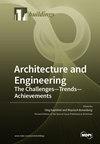厚垫层与刚性桩复合地基的加固特性研究
IF 3.1
3区 工程技术
Q2 CONSTRUCTION & BUILDING TECHNOLOGY
引用次数: 0
摘要
刚性桩复合地基法是加固软弱地基最常用的方法。在这种方法中,桩基通常需要穿过软弱土层,桩端落在承载力较好的持力层上。在现有技术条件下,软弱土层越厚,桩身越长,桩的施工质量就越难保证。针对这一问题,一些学者采用了厚垫层刚性桩复合地基法进行加固处理。本文利用 PLAXIS 3D(V20.04.00.790)软件建立了厚垫层刚性桩复合地基有限元模型,并模拟了地基加固过程。研究了垫层厚度、压缩模量、抗剪强度指标等参数对地基沉降和桩土应力分布的影响,并在考虑加固效果的条件下分析了这些参数的合理范围。通过对比分析,可以得出结论:对于深厚软弱土层地区,缓冲层的厚度可在 0.5 至 2.6 之间。缓冲层的厚度和压缩模量对地基沉降、桩土应力比和桩身应力有较大影响,而缓冲层的抗剪强度指标对这些参数的影响相对较小。合理选择垫层的几何和力学参数,可以有效减少桩顶应力集中,更好地发挥桩间土的作用。本文章由计算机程序翻译,如有差异,请以英文原文为准。
Research on the Reinforcement Characteristics of Thick Cushion Layer and Rigid Pile Composite Foundation
The rigid pile composite foundation method is the most commonly used method for strengthening weak soil foundations. In this method, piles usually need to pass through weak soil layers, and the pile end falls on a bearing layer with good bearing capacity. Under existing technical conditions, the thicker the weak soil layer, the longer the pile body, and the more difficult it is to ensure the construction quality of the pile. In response to this issue, some scholars have adopted the rigid pile composite foundation method with a thick cushion layer for reinforcement treatment. This article uses PLAXIS 3D (V20.04.00.790) software to establish a finite element model of rigid pile composite foundation with a thick cushion layer and simulate the process of foundation reinforcement. The influence of parameters such as thickness, compression modulus, and shear strength index of the cushion layer on foundation settlement and pile–soil stress distribution is studied, and the reasonable range of these parameters is analyzed under the condition of considering reinforcement effect. Through comparative analysis, it can be concluded that for deep and weak soil areas, the thickness of the cushion layer can range from 0.5 to 2.6. The thickness and compressive modulus of the cushion layer have a significant impact on the settlement of the foundation, the pile–soil stress ratio, and the stress of the pile body, while the shear strength index of the cushion layer has a relatively small impact on these parameters. Reasonably selecting the geometric and mechanical parameters of the cushion layer can effectively reduce stress concentration at the pile top and better play the role of the soil between piles.
求助全文
通过发布文献求助,成功后即可免费获取论文全文。
去求助
来源期刊

Buildings
Multiple-
CiteScore
3.40
自引率
26.30%
发文量
1883
审稿时长
11 weeks
期刊介绍:
BUILDINGS content is primarily staff-written and submitted information is evaluated by the editors for its value to the audience. Such information may be used in articles with appropriate attribution to the source. The editorial staff considers information on the following topics: -Issues directed at building owners and facility managers in North America -Issues relevant to existing buildings, including retrofits, maintenance and modernization -Solution-based content, such as tips and tricks -New construction but only with an eye to issues involving maintenance and operation We generally do not review the following topics because these are not relevant to our readers: -Information on the residential market with the exception of multifamily buildings -International news unrelated to the North American market -Real estate market updates or construction updates
 求助内容:
求助内容: 应助结果提醒方式:
应助结果提醒方式:


